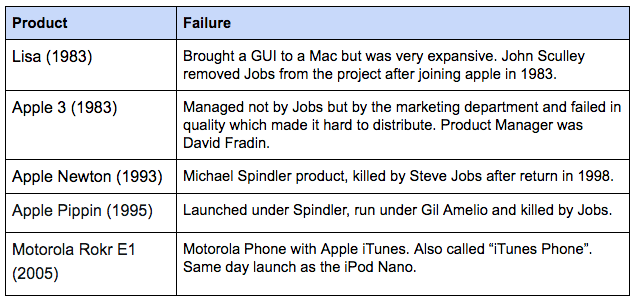his post accomplishes two things for me. First of all, I have to get my facts straight and remember them. Second, I have (anecdotal) evidence for what I believe in terms of product development.
I believe there are two roughly approaches of buildings products. One, is the visionary technology approach captured in quotes like “people don't know what they want until you show it to them.” (Steve Jobs). The alternative process is a jobs-to-be-done approach, that assumes that you can identify at least the problems that need to be solved and approach.
Summed up, you could look at the differences like this. This is extremely rough and definitely not mutually exclusive/commonly exhaustive.
Definitely an incomplete matrix
The outcomes of the first approach can be very impressive, i.e. the iPhone. The problem is that if you only see the outcome and ignore the failures (= survivorship bias) it looks like that’s the only way to build. That is risky because in order to get to an iPhone-like product you need to have the stamina and cash to survive the failed product which you don’t see when you just look at the iPhone for example.
That is why I am listing some of the biggest failed Apple products here, to remind myself and those who read this. In any case, the iPod, the iPhone and the MacBook air are amazing products.
Incomplete list
The selection is not complete but based on what I find interesting.
On apple and this issue I recommend these resources:
- https://blog.aha.io/why-i-failed-with-the-apple-iii-and-steve-jobs-succeeded-with-the-macintosh/
- https://shows.howstuffworks.com/techstuff/how-apple-survived-the-pc-wars-part-one.htm
- https://shows.howstuffworks.com/techstuff/how-apple-survived-the-pc-wars-part-two.htm#
- https://www.forbes.com/sites/chunkamui/2011/10/17/five-dangerous-lessons-to-learn-from-steve-jobs/#32e10fa03a95

